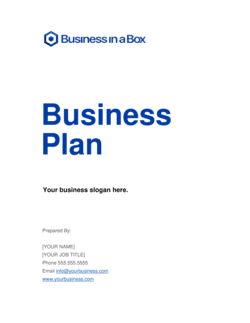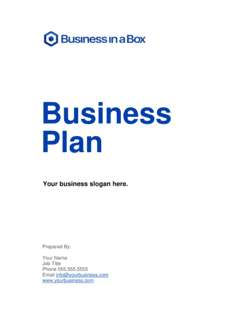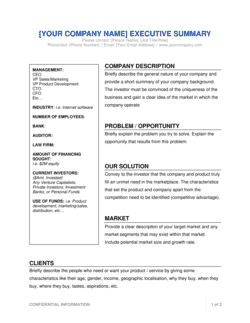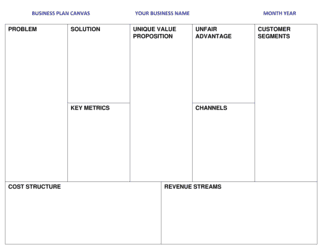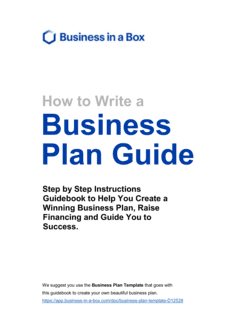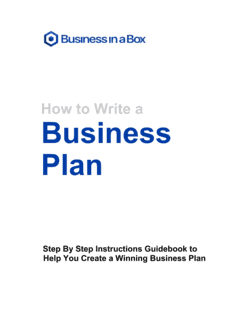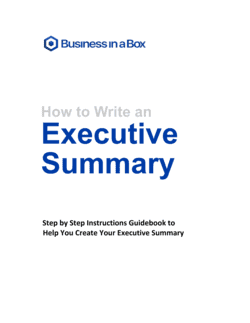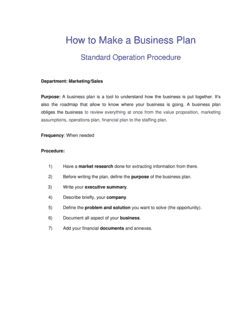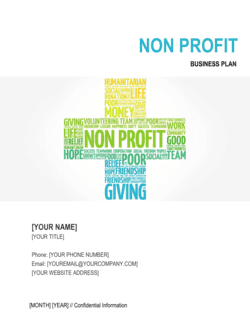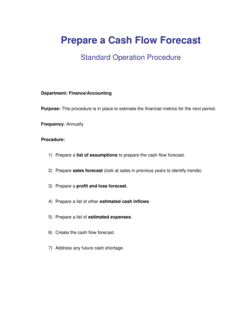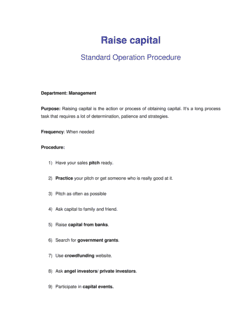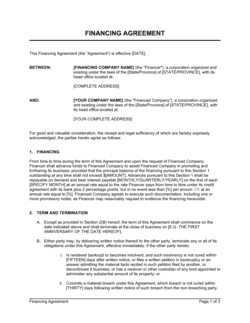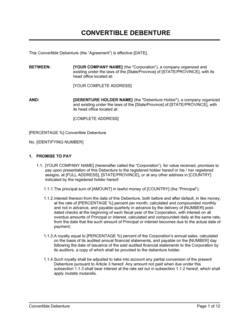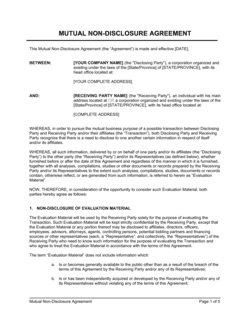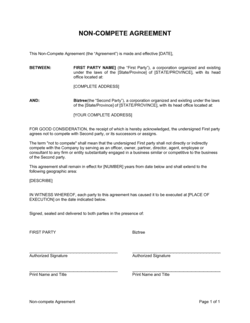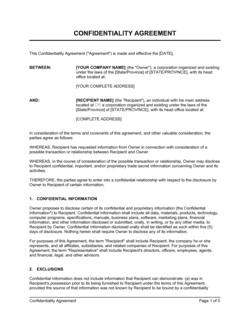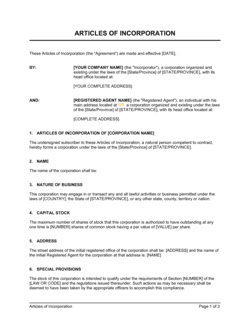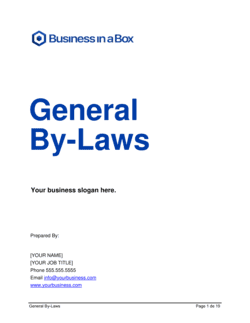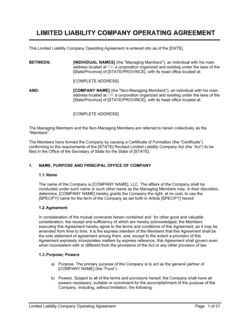Business Plan Kit
Everything You Need to Create a Business Plan, Start Your Business & Raise Financing
How to Write a Business Plan
Agreements & Contracts
The Definitive Guide to Creating a Business Plan (2020)
Before you splash the cash on setting up your new business, it’s important to first complete a business plan.
The process of writing a business plan can seem like a chore when you’re eager to make the idea in your mind a commercial success.
However, with high failure rates for new businesses, a business plan is an essential tool for keeping your business on the right path to success. And, to make the process easier, Business-in-a-Box offers easy to use templates that save you time and help you create the ultimate roadmap for your business.
What is a Business Plan?
A business plan is a document that outlines every essential detail of your company and future plans. Investors use a company business plan to help them decide whether they will be interested in jumping on board, which is why it needs to be detailed and accurate. Even if you aren’t looking for investment, a business plan is still essential. Through it, you can determine the feasibility of your ambitions and identify any flaws. By ironing out the creases in your project, you’ll be heading into business with a secure strategy and a clear direction for growth. Although detailed, the business plan shouldn’t be a novel. Keep it as short and concise as possible.
A business plan is unique to the business and should be created to suit your individual needs and goals. However, some sections can be found in every good business plan that you’ll need to know:
- Executive Summary
- Overview
- Products and Services
- Market Analysis
- Operations
- Management Personnel
- Marketing
- Finances
Executive Summary
The executive summary is an opportunity to give a compelling introduction to your business and the direction you want to take it. This section is a short, information filled overview that is ideally around a page in length. Although the executive summary is found at the beginning of the business plan, this section should be written last, once information from each of the individual section can be consolidated. The role of the summary is to highlight the key points of your business plan. You need to clearly explain the problem that your business will solve and demonstrate how your company will be successful in solving it and ultimately turning a profit. The executive summary should also include basic information on:
- The overall business concept
- The target audience
- Marketing strategies
- Product and service description
- Business objectives
- Market analysis
- Financial positions and projections
- Personnel
If you’re not sure what exactly to put in the executive summary, following some business plan templates will give you a solid foundation to build on. The detailed yet brief outline of your business and plans should spark your reader’s interest and get them excited to learn more about your vision.
Overview
This will be the briefest section of your business plan, but don’t underestimate its importance. The overview is where you can provide essential basic information on your company as well as the details that you want your readers to know, including what makes your business special and what values and principles will be upheld. An overview first includes the mission statement: up to a few sentences explaining the purpose of the business and the main short- and long-term goals. Additionally, the overview contains information on the location and the history of the company, such as when it started, and how it has evolved so far. An important part of the overview is the company’s legal structure. Give detailed information on the ownership and legal rights of the company as well as licensing. Finally, describe the industry you want to enter, the product or service you will be offering, and why your business is worth investing in.
Products and Services
The product or service that you will be selling was likely the source of inspiration for starting your business. This section is where you can share your passion for these products and services and help readers understand your vision. Start by giving detailed yet clear descriptions of the products or services that your business will provide without using industry-specific jargon. Then, briefly discuss why there is a need for it in the market and how it can benefit customers. Make sure you explain what makes these products or services unique and how exactly you will be different from competitors in the market. This could be with the invention of a completely new product, finding a niche in the pricing landscape, or offering new levels of availability. Finally, provide all the necessary information on patents, trademarks, and copyrights to understand your legal position and exclusivity opportunities.
Market Analysis
Back yourself up by supporting your business ideas with research. Market analysis is how you can validate the need for your business and prove its worth. The basic concept for any new business is that it provides a solution for an existing problem. With results from your market analysis, you can identify and explain the problem and how it causes a pain point for your target market. Inform your readers why your product or service is the ideal solution for that problem and how it is superior to competitive solutions in the industry.
In the market analysis section, you should divulge market trends, the size of the market, the demand for your product, and whether the market is growing, remaining stable, or declining. Market analysis is also how you can get to know your target market. Include information on your customer demographics and buying habits and how that will help you reach them. Finally, market research gives you insight into your competitors. You can identify current and future competitors and explain where your company will sit in comparison to them. Research their methods and see what works to give you inspiration for your own business plan.
This section allows you to let readers know you’ve thought about the market you want to enter, your company’s position in it, and how well your product or service will fit. There can be important information to include here to strengthen your plan and impress investors. Using a template can stop you from missing anything in complex sections.
Operations
When dreaming up your business idea, you might have pictured what your working days would have looked like. Here is your opportunity to figure out exactly what is needed for the daily running of your business and explain the logistics of how your business is going to function. Start by thinking about what needs to be done, how it will be done, and what equipment or resources are needed for it to be done. Since the daily operations depend entirely on your business, your goals and the market you will be interacting with, the operations section looks completely different on every business plan. Using a business plan sample is a useful tool for guiding you in the right direction.
Typical areas that are essential for operations include:
- Sourcing and suppliers
- Distribution
- Manufacture
- Legal
- Facilities and equipment
- Inventory
- Staffing
Above all, this section needs to be detailed. Go through every aspect of a day, week, and a month in your business and include every action that needs to happen for a successful result. This is also a brilliant tool for finding any plot holes in your plans and fixing them before you begin operations.
Management Personnel
It’s unlikely you’ll be able to reach your business goals all by yourself. Instead, you’ll need to surround yourself with a team of professionals that you can trust to get the job done. This section is where you can prove to investors (and yourself!) that you have the right people for the job. Outline who the key members of your team are, what their responsibilities will be, and what they can bring to the business. You only need to give brief details on the personal background of your team, including their experience, education, and skillsets.
Here is where you can also discuss whether you will be hiring any new staff. Take a look at your plans for operations and growth and decide what qualities you will be looking for in new employees. Having a good understanding of the number of people, you will need, and the level of salary their experience deserves will help you when figuring out your finances.
Often, it’s the passion and commitment of the people involved that make or break a business. Explain in this section why your team is worth an investment.
Marketing
Once you’ve determined the fine details of who your target audience is, you need to work on how you can reach them. The marketing section outlines every aspect of how your customers will interact with your company. That means you have to decide and explain here how you want to present your company to the customers and what position in the market you will take. This could range from cheap and convenient to luxurious and in-demand. Your positioning in the market should match your market research, the market rates, and the niche you want to fill. Develop a brand identity around these decisions and use it to influence all your company outputs, including the company name, logos, website, images, and slogans.
With your brand decided, you need to outline your budget and plans for advertising. Avenues for advertisement depend on your target market but could include television adverts, radio adverts, newspaper adverts, social media advertising, or more. Whatever option of advertising works for your niche, make sure you provide detailed explanations on how and when you will be incorporating advertising into your business plan.
Finances
At the end of the day, the success of a business comes down to its financial viability. The financial plan you include will be the most heavily scrutinized by your readers, so it is arguably the most important one to get right. As it’s based on pure numbers, the financial plan can be a reality check on whether your business has potential. Ideas and vision are great motivators, but if the business struggles to turn a profit, it will likely fail. Having an accurate and thorough financial plan on your side will give your business the best chance of success as it can influence your business decisions and encourage funding opportunities. The financial plan is made up of some key documents that explain the current status and future outlook for your business. If you’re no accountant and you’re worried about what to put in the financial section of your business plan, you can follow a business plan outline to keep you confidently in control of your company’s financial situation.
Financial plans generally consist of an income statement, a balance sheet, a cash flow statement, and a financial projection. An income statement focuses on the sources of revenue and expenses during a certain period. A balance sheet takes into account assets and liabilities to give an overall picture of company equity. A cash flow statement looks at all incoming funds and cash outflows to measure the costs of operation and changes in balance. Finally, a financial projection looks at the business history and growth plans to can give you and investors an idea of how your business’s financial affairs will look in the future.
Creating the ideal business plan that impresses potential investors and can be a long and complicated task. It can be frustrating to spend your time and effort into a plan only to find out you’ve missed essential information that puts a halt in your plans. Business-in-a-Box understands the need to get it right so that you can start achieving your business goals.
To save your time and help you create a professional plan, you can sign-up to get full template previews or browse our collection of over 1,900 useful business templates.
